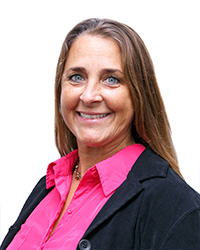Classification is a process where certified Para Surfing Classifiers assess the strength, flexibility, balance, and coordination of competitive adaptive surfers in order to group the athletes with permanent impairments into one of the nine Para Surfing Sport Classes.
The classification goal is to accurately allocate the athlete into their best surf class to ensure high competition and a more leveled playing field to minimize the impact of impairments on the sport performance.
The ISA Para Surfing Classifiers begin with establishing if an athlete has an underlining health condition which can lead to an “IPC approved” or eligible impairment.
Next, the classifier panel will assess if the impairment(s) meets the Minimum Impairment Criteria.
ISA Para Surfing has 7 Physical Para Surfing Classes and 2 Visual Sport Classes.
| Para Surfing Sport Classes |
| Sport Class |
Description |
| Para Surfing Stand 1 |
Any surfer who rides a wave in a standing position with an upper limb amputation or congenital or impairment equivalent or short stature. |
| Para Surfing Stand 2 |
Any surfer who rides a wave in a standing position with a below the knee amputation or congenital or impairment equivalent, or leg length difference. |
| Para Surfing Stand 3 |
Any surfer who rides a wave in a standing position with an above the knee amputation or both lower extremity amputations or congenital or impairment equivalent. |
| Para Surfing Kneel |
Any surfer who rides a wave in a kneeling or sitting without paddle position with an above the knee amputation or both lower limb amputations or congenital or impairment equivalent. |
| Para Surfing Sit |
Any surfer who rides the wave in a sitting position that does NOT require assistance paddling into a wave and getting back on the board safely. |
| Para Surfing Prone 1 |
Any surfer who rides the wave in a prone position that does NOT require assistance paddling into a wave and getting back on the board safely. |
| Para Surfing Prone 2 |
Any surfer who rides the wave in a prone position that DOES require assistance in the water, paddling into a wave, and getting back on the board safely. |
| Para Surfing Vision Impairment 1 |
Any surfer who rides a wave in a standing position with IBSA classification Level B1. |
| Para Surfing Vision Impairment 2 |
Any surfer who rides a wave in a standing position with IBSA classification Level B2 and Level B3. |
| 10 IPC* Approved Eligible Impairments |
| Physical Body Function Impairments (5) |
Physical Body Structure Impairments (3) |
Visual Impairments (3) |
| Impaired Passive Range of Motion |
Limb Deficiency |
IBSA Vision Impairment B1 |
| Impaired Muscle Power |
Leg Length Difference |
IBSA Vision Impairment B2 |
| Hypertonia |
Short Stature |
IBSA Vision Impairment B3 |
| Ataxia |
|
|
| Athetosis |
| *IPC=International Paralympic Committee |
Explanations of Terminology:
Approved underlying health conditions or medical diagnoses include, but are not limited to, spinal cord injuries, brain injuries, strokes, cerebral palsy, multiple sclerosis, short stature, congenital limb deficiencies, leg length differences, amputations, and vision impairments.
The 10 Paralympic eligible impairments are impaired passive range of motion, impaired muscle power, limb deficiency, leg length difference, short stature, hypertonia, ataxia, athetosis, vision, and intellectual impairment. At this time, intellectual impairment is not used in Para Surfing.
There are several impairments, that although they do impair function, they are considered “Non-Eligible Impairments” for Para Surfing. Examples of non-eligible impairments include pain, hearing impairment, low muscle tone, hypermobility, joint instability, endurance, and poor respiratory functioning according to the International Paralympic Committee.
Each Para Surfing Surf Class has minimal impairment criteria for each eligible impairment. The minimal impairment criteria has been established based on the impairment being enough of an impairment that it affects the sport of surfing. For example, although amputated fingers are recognized as an impairment, missing fingers is not enough of an impairment to impact the sport of surfing. Refer to the “ISA Para Surfing Classification Rules and Regulations” for the listing of each eligible impairment, minimal impairment criteria, and description of each Para Surfing Class.
Credits:
Thank you to the following experts and organizations for their contributions to the development of the Para Surfing Classification system:
- Dr. Maureen Johnson, PhD, MS, OT/L, BCPR, C/NDT
- Stoke For Life Foundation
- Sandra Titulaer, MD
- Jordi Beltran, PT
- Jessica Tidswell , PT, DPT, ATC, SCS, CSCS*D
- Sylvana Mestre, Play and Train Organization, Paralympic Advisor
- Jon Richards, Para Surfing Technical Director, CTRS
- AccesSurf

